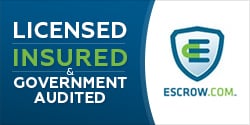- Impact
- 72
Amid the ever-growing and increasingly sophisticated threat landscape, all potential avenues they originate from, including domain names, have come under scrutiny. What’s more, the domaining market is a highly dynamic one, with a lot of competition when it comes to seizing high-profile domains as they become momentarily available across both legacy and new gTLDs.
With these considerations in mind, I would like to raise a few questions:
With these considerations in mind, I would like to raise a few questions:
- What challenges do you encounter when buying and selling domain names? How do you overcome these?
- More specifically, do you work with any particular tool or information source to make the process safer and more efficient?
- Maintaining a solid reputation: With this point, I do not refer only to being marketable to customers. “Reputation” also has to do with cybersecurity — more precisely avoiding ties to malicious activities or actors. To be considered reputable in that sense, I’d expect each professional domainer to have a strict screening procedure in place to avoid buying/selling domains with a “malicious” background. Even the most prominent domain registers, after all, lose face when their names got dragged into reports on attacks.
- Avoid blacklisting: As part of buying domains that belonged to previous registrants, there’s also the possibility of ending up with a blacklisted name in one’s portfolio. Some owners may have dropped domains due to a lack of interest (e.g., going out of business, etc.) while others may have ended up on the chopping board because of past misdeeds such as heavy spamming. This can make reselling pretty hard.
- Act fast when opportunities present themselves: Attractive domains don’t stay available for a very long time. Domainers have to stay ahead of the competition so they can get their hands first on the most attractive domains that are likely to get buyers’ attention.
- Reverse WHOIS Search: This tool lets users obtain detailed information on a domain. With it, domainers can easily determine who owns a domain and how to get in touch with that person to speed up negotiation.
- WHOIS History Search: This service allows users to dig deeper into the history of a domain to see all of its past owners along with other modifications it has undergone over the years.
- Domain Availability Check: This tool instantly lets users know if the domains they’re looking to buy is available. It makes staying ahead of the competition doable as you can check availability in bulk for a given search term.
- Domain Monitor: This service allows users to keep tabs on domains of interest. Each time that a domain changes hands, expires, or is modified in any way, the domainers are automatically made aware via daily reports.
- Registrant Monitor: This tool informs users about every move a registrant makes. Should a domainer suspect a registrant of foul play, he’d find it easy to avoid acquiring domains from said registrant with daily reports.
This was a sponsored ad.
Last edited by a moderator:






